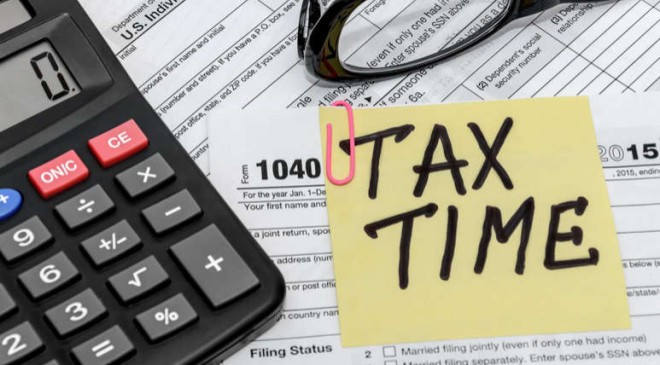PANAMA CITY, Fla. (WMBB) – This year has left taxpayers with more than a few questions.
As tax season begins in earnest parents have to determine how the payments they got last year will impact their taxes. And others might wonder what they should do with letters they have received from the IRS.
Below are the top five things the IRS suggests taxpayers remember this year.
Two IRS letters to watch for this tax season
1. File an accurate return and use e-file and direct deposit to avoid delays. Taxpayers should electronically file and choose direct deposit as soon as they have everything they need to file an accurate return. Taxpayers have many choices, including using a trusted tax professional. For those using e-file, the software helps individuals avoid mistakes by doing the math. It guides people through each section of their tax return using a question-and-answer format.
2. For an accurate return, collect all documents before preparing a tax return; make sure stimulus payment and advance Child Tax Credit information is accurate. In addition to collecting W-2s, Form 1099s and other income-related statements, it is important people have their advance Child Tax Credit and Economic Impact Payment information on hand when filing.
- Advance CTC letter 6419: In late December 2021, and continuing into January, the IRS started sending letters to people who received advance CTC payments. The letter says, “2021 Total Advance Child Tax Credit (AdvCTC) Payments” near the top and, “Letter 6419” on the bottom righthand side of the page. Here’s what people need to know:
- The letter contains important information that can help ensure the tax return is accurate.
- People who received advance CTC payments can also check the amount of the payments they received by checking their Online A
- Third Economic Impact Payment letter 6475: In late January 2022, the IRS will begin issuing letters to people who received a third payment in 2021. The letter says, “Your Third Economic Impact Payment” near the top and, “Letter 6475” on the bottom righthand side of the page. Here’s what people need to know:
- Most eligible people already received their stimulus payments. This letter will help individuals determine if they are eligible to claim the Recovery Rebate Credit (RRC) for missing stimulus payments.
- People who are eligible for RRC must file a 2021 tax return to claim their remaining stimulus amount.
- People can also use IRS online account to view their Economic Impact Payment amounts.
- ccount on IRS.gov.
- Eligible taxpayers who received advance Child Tax Credit payments should file a 2021 tax return to receive the second half of the credit. Eligible taxpayers who did not receive advance Child Tax Credit payments can claim the full credit by filing a tax return.
Both letters – 6419 and 6475 – include important information that can help people file an accurate 2021 tax return. If a return includes errors or is incomplete, it may require further review while the IRS corrects the error, which may slow the tax refund. Using this information when preparing a tax return electronically can reduce errors and avoid delays in processing.
3. Avoid lengthy phone delays; use online resources before calling the IRS. Phone demand on IRS assistance lines remains at record highs. To avoid lengthy delays, the IRS urges people to use IRS.gov to get answers to tax questions, check a refund status or pay taxes. There’s no wait time or appointment needed – online tools and resources are available 24 hours a day.
Additionally, the IRS has several ways for taxpayers to stay up to date on important tax information:
- Follow the IRS’ official social media accounts and email subscription lists to stay current on the latest tax topics and alerts.
- Download the IRS2Go mobile app, watch IRS YouTube videos, or follow the IRS on Twitter, Facebook, LinkedIn and Instagram for the latest updates on tax changes, scam alerts, initiatives, products and services.
- Taxpayers can also get information in their preferred language. The IRS translates tax resources into several languages and currently has basic tax information in 20 languages. People can also file Schedule LEP, Request for Change in Language Preference, to receive written communications from the IRS in their preferred language.
4. Waiting on a 2020 tax return to be processed? Special tip to help with e-filing a 2021 tax return: In order to validate and successfully submit an electronically filed tax return to the IRS, taxpayers need their Adjusted Gross Income, or AGI, from their most recent tax return. For those waiting on their 2020 tax return to be processed, here’s a special tip to ensure the tax return is accepted by the IRS for processing. Make sure to enter $0 (zero dollars) for last year’s AGI on the 2021 tax return. For those who used a Non-Filer tool in 2021 to register for an advance Child Tax Credit or third Economic Impact Payment in 2021, they should enter $1 as their prior year AGI. Everyone else should enter their prior year’s AGI from last year’s return. Remember, if using the same tax preparation software as last year, this field will auto-populate.
5. Free resources are available to help taxpayers file. During this challenging year, the IRS reminds taxpayers there are many options for free help, including many resources on IRS.gov. For those looking to avoid the delays with a paper tax return, IRS Free File is an option. With Free File, leading tax software providers make their online products available for free as part of a 20-year partnership with the Internal Revenue Service. This year, there are eight products in English and two in Spanish. IRS Free File is available to any person or family who earned $73,000 or less in 2021. Qualified taxpayers can also find free one-on-one tax preparation help around the nation through the Volunteer Income Tax Assistance (VITA) and Tax Counseling for the Elderly (TCE) programs.









































